Potting soil? That’s old news, leca expandable clay balls are the hot new thing.
And honestly (for a technology that sounds like it’s from the Stone Age), these clay balls are actually quite handy in the right places.
You may already know leca as the darling soil-less substrate of the houseplant world, but where leca really shines in the context of terrariums is in drainage.
There’s really nothing quite like leca. It offers a variety of unique benefits over classic materials, and it’s been our go-to choice for terrarium false bottoms for a long time.
In this article, we’re going to break down the secrets of leca balls and how to use them effectively in your next project.
Terrarium builders, roll out!
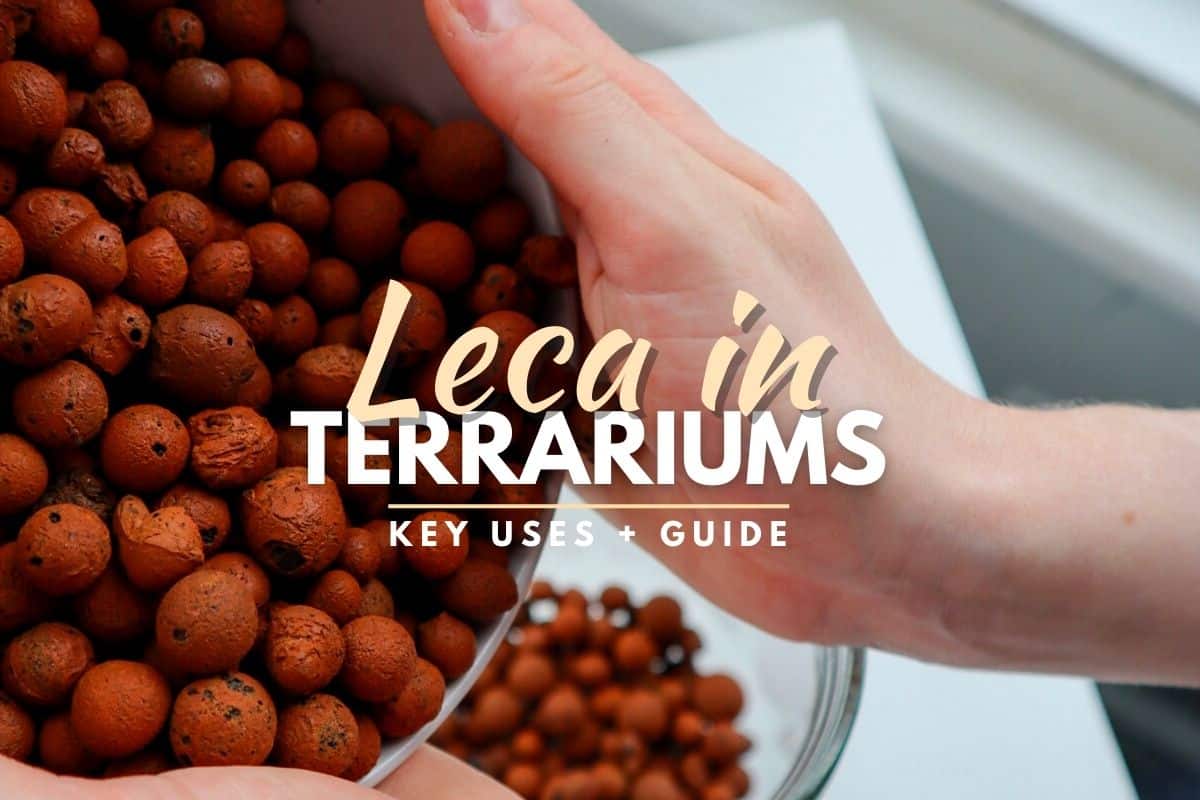
Terrarium Tribe is reader-supported. When you purchase through links on our site, we may earn an affiliate commission (at no further cost to you). 💜
Leca 101 – Types & Key Benefits
First, let’s clarify the term, as it goes by lots of names.
“LECA” is actually a sexy acronym for an otherwise un-sexy product. Lightweight Expandable Clay Aggregate, to be precise.
Whether you call them leca beads, hydroton balls, expanded clay balls, hydroleca, or hydroponic pebbles, they’re essentially all the same thing. (Honestly, I just call it “leca” and drop the capitals for convenience).
Still with me? Good.
Essentially, leca are clay balls that have been expanded to produce a honeycomb structure with an enormous relative surface area and strength.
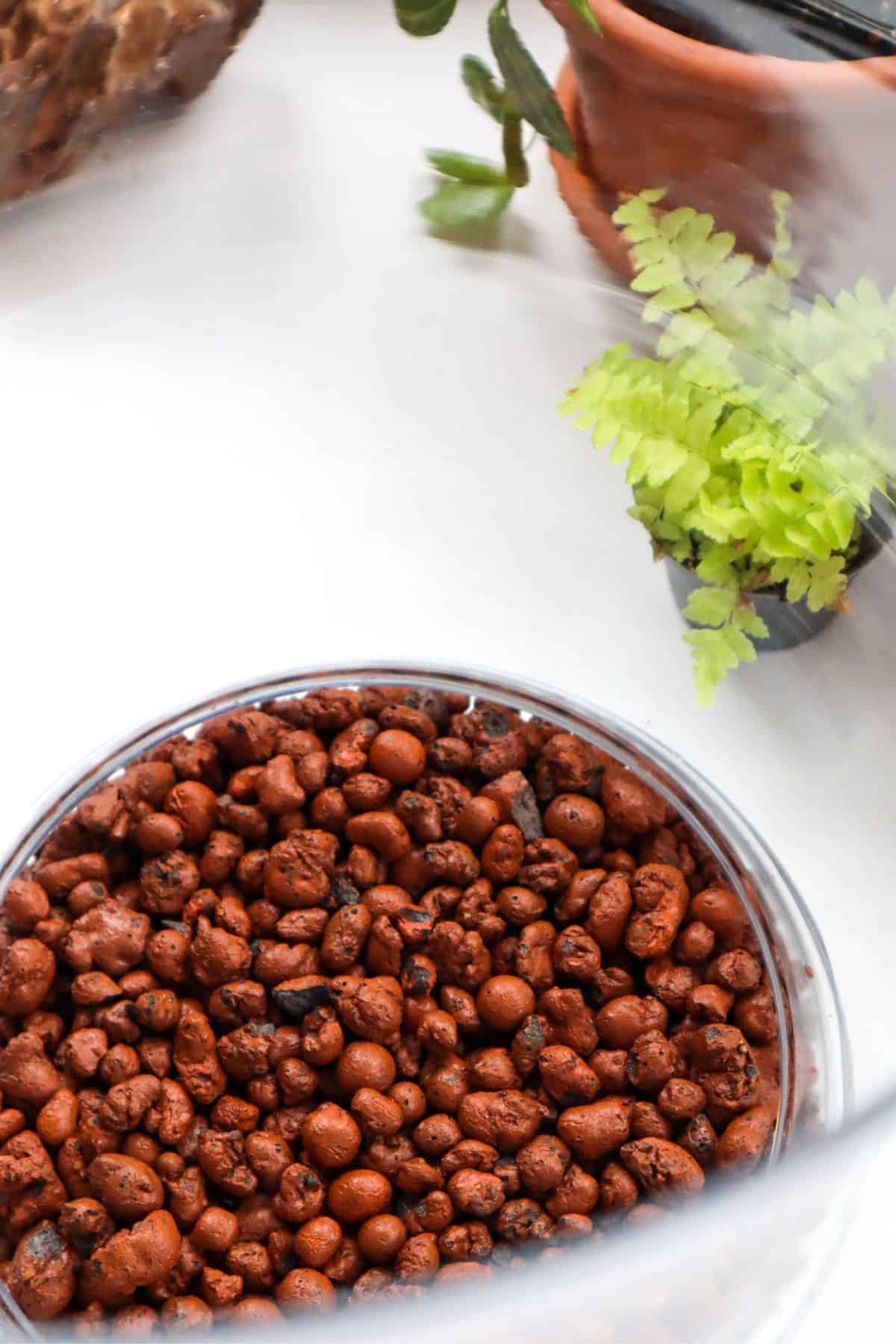
Which makes it great for terrarium drainage layers for a variety of reasons.
- Lightweight – Leca is far lighter than your typical river rocks or gravel and, therefore, far less likely to break your glass container. It helps with moving them around too!
- Eco-friendly – It’s made exclusively from clay (which isn’t exactly endangered), and it’s completely inert and non-toxic. So it’s safe to use with all manner of plants.
- Durable – Seriously, this material is even used in construction. If it can support roads, you can be sure it can support your plants and terrariums for years to come.
- Reusable – Unlike soil, this medium never expires, and you can use it as many times as you need.
- Pest resistant – No soil, no problem. Pests that reproduce in soil (fungus gnats, I’m looking at you) can’t get a foothold in a leca medium.
Okay, all of these are great, right? But there’s one more quality that leca brings to the table that most other materials don’t.
The ability to absorb excess water.
In a drainage layer, this is a particularly helpful skill.
After all, the counterarguments to the use of a drainage layer are:
- The plant roots can eventually make their way down into the reservoir, where they can rot.
- Excess water will wick back up the substrate if the reservoir fills to the top.
Leca eliminates both risks by sequestering water that finds its way to the bottom. It’s a way to capture excess water and only release it when necessary (plus, it’ll boost ambient humidity).
Finally, the porous structure also helps to create an ideal environment for bioactive bacteria. Win-win!
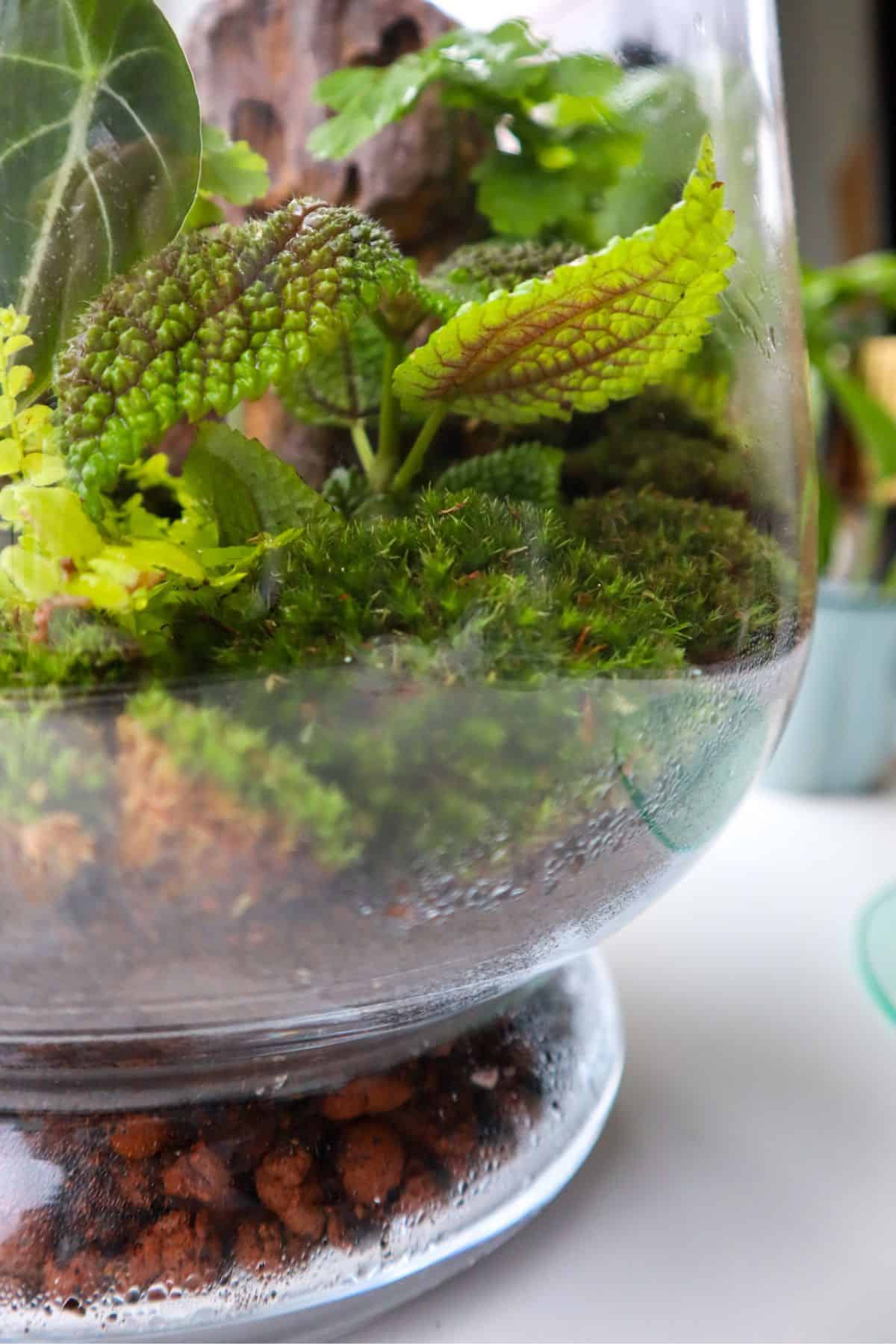
Where to Buy Leca (What Kind is Best?)
Leca is just one name for a wide range of expanded clay ball products.
Ultimately, there isn’t a single best type. From orangey-red to greyish-brown, large to small, uniform to asymmetrical, it’ll all do the same job.
The main difficulty is finding it for sale in smaller amounts. Most terrariums only require an inch, so buying a cubic foot would be somewhat over-doing it.

👉 Shop leca for terrariums on our store.
How to Make a Leca Drainage Layer
1. Wash your leca – It can often come super dusty and cause an irritating cloud if you pour it directly into a terrarium. A quick soak and rinse should do the trick.
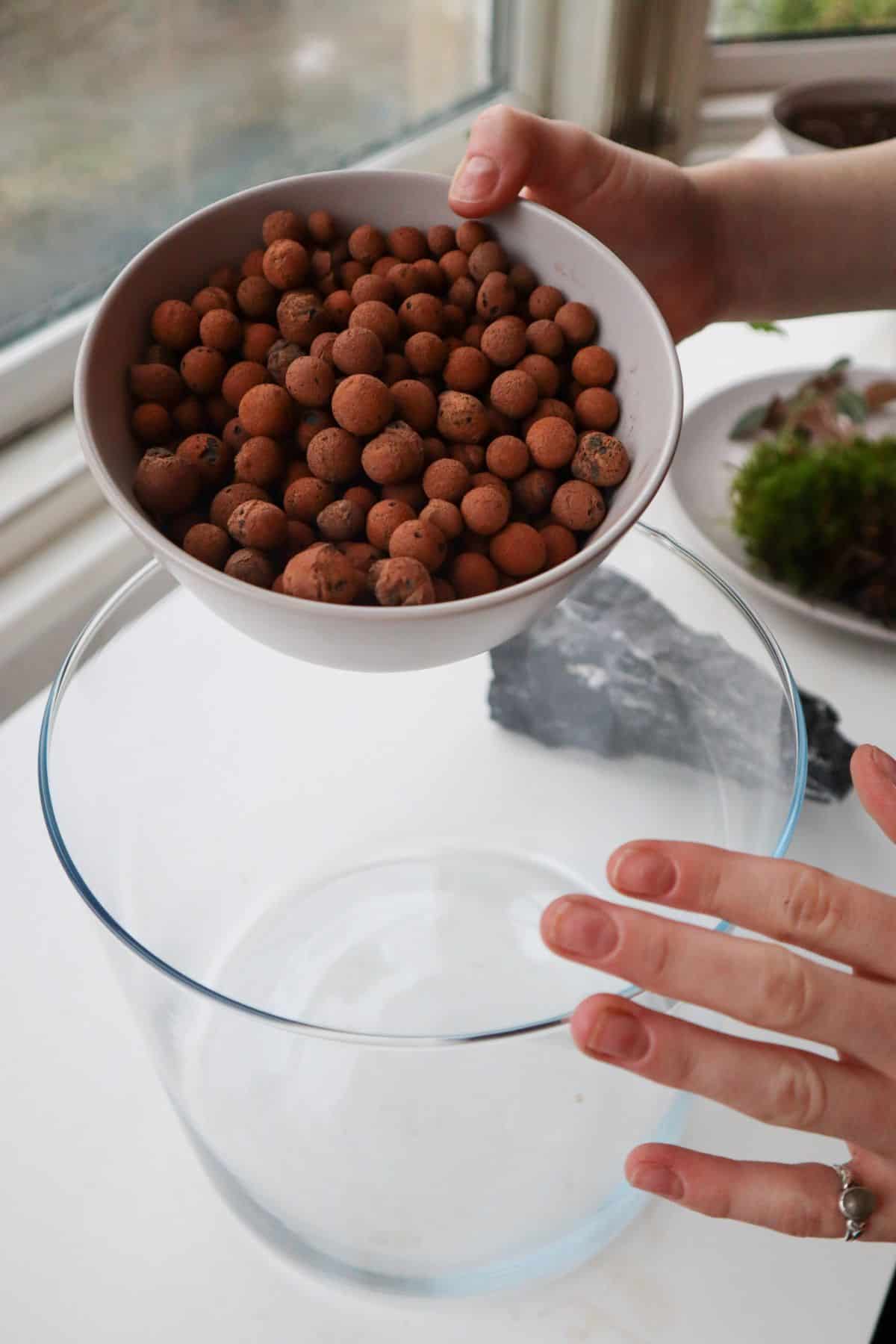
2. Add your leca – The layer should be one inch thick for most typical tabletop terrariums. If you’re building a larger tank-style vivarium, you’ll likely need significantly more leca and a thicker layer.
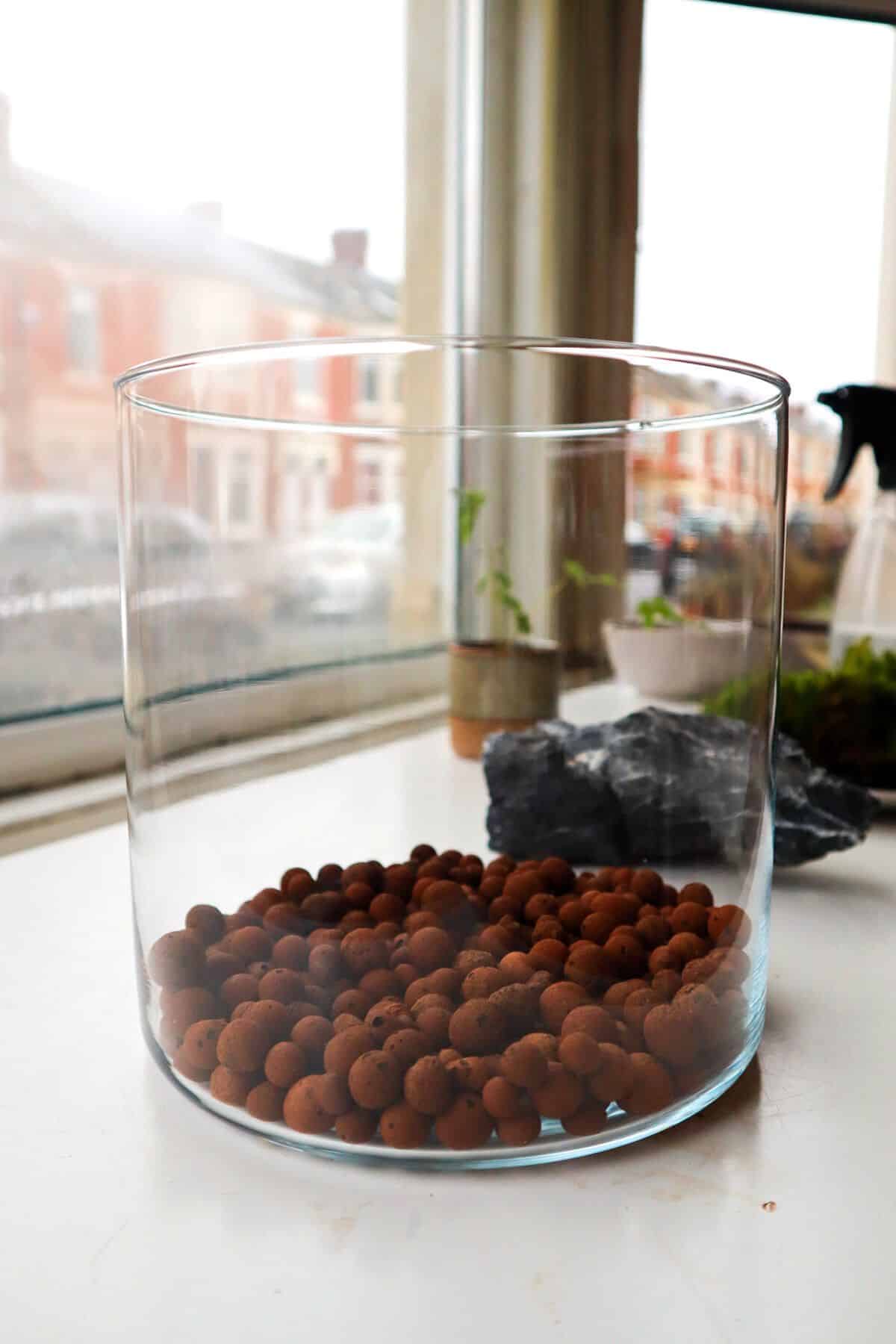
3. Add a mesh barrier – Here, you can choose to protect your leca layer from being filled with your terrarium substrate. A fiberglass mesh cut-to-size can be an effective (and inconspicuous) ally.
It will prevent your plants’ roots from growing into the leca, keeping them healthy for a long time.
👉 We sell terrarium mesh on our store, too.
Over to You
What has your experience been with leca?
Do you love it or hate it? Let us know in the comments!
And now that you have your drainage layer sorted, why not check out our guide to the best substrate for terrariums next?

Hello,
I have made my bioactive enclosure but I have forgot to ”clean” my leca balls. Do you know if this will be an issue for me? I really dont wanna take everything out and losing my cleanup crew 🙂
Good question! To be honest, I don’t really know. 😅 In theory, bringing in unwashed leca might bring in some extra dirt or bacteria/fungi – but as with most things “it depends.” Personally I’d wait to see how it goes, it might well be fine.
I was using nice black stones, but I think we are switching to leca. Thanks.
Having just read your article on Leca balls I feel secure using them rather than crushed travel. Thank you.